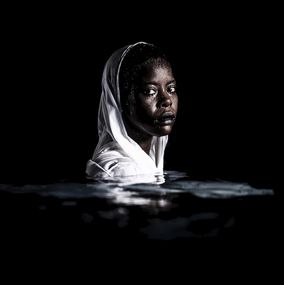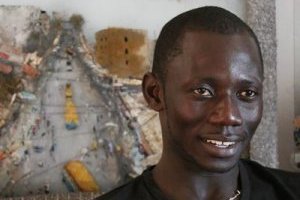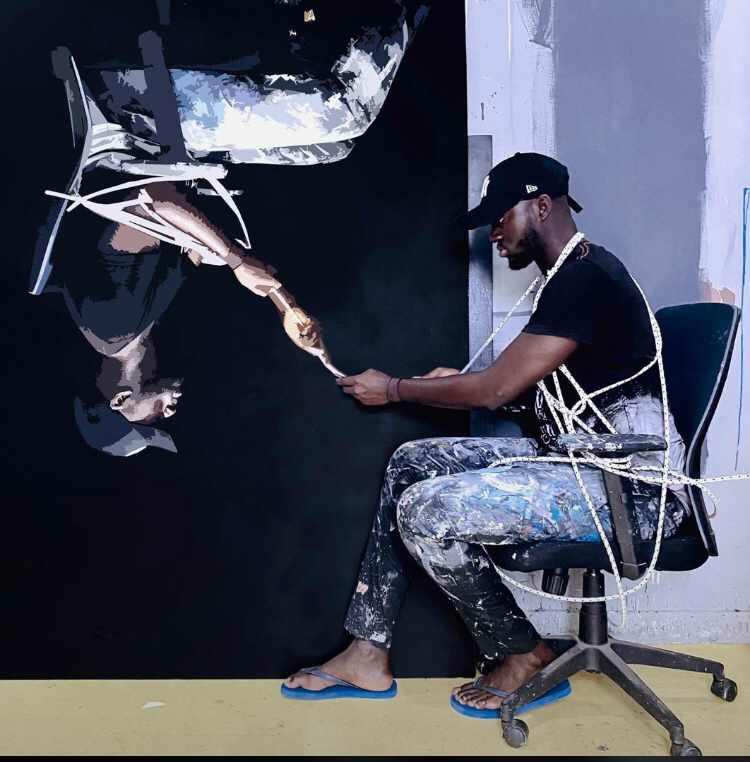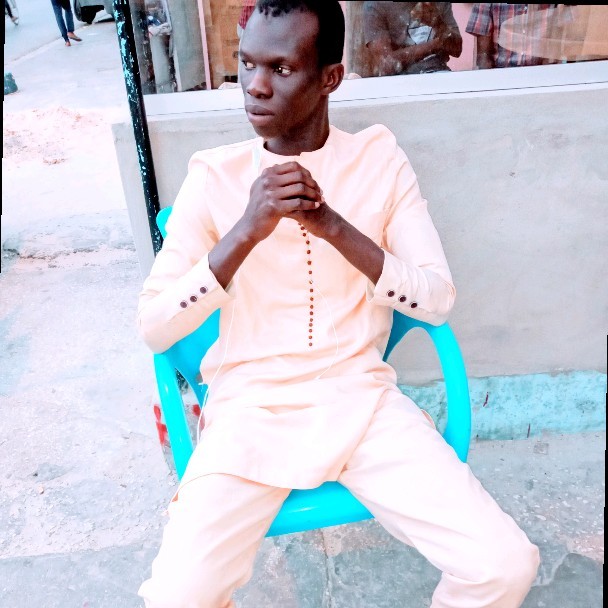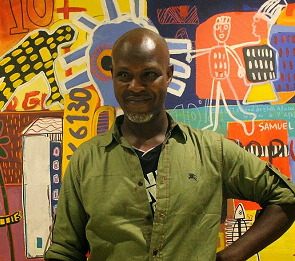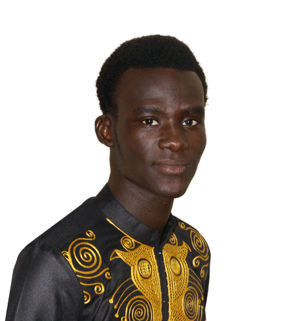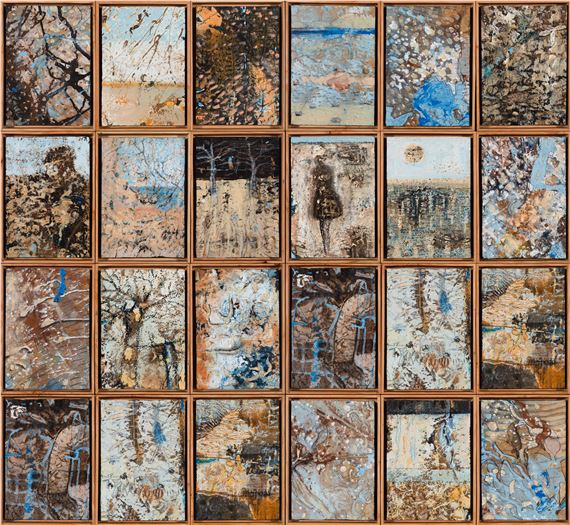
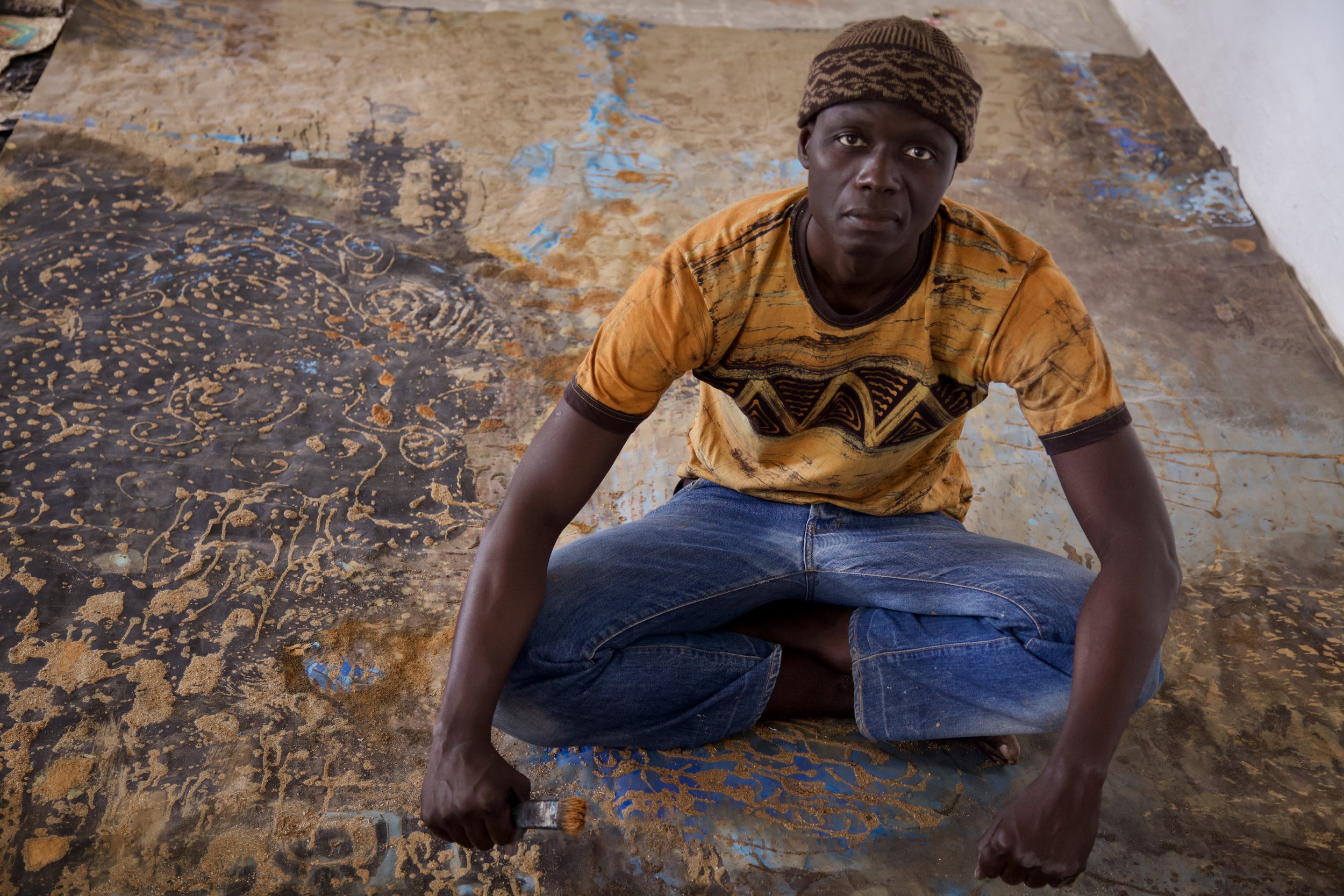
Arebenor BASSENE
Biography
Arébénor Bassène (b. 1974, Senegal) holds a master's degree in African civilizations and literatures from Cheikh Anta Diop University (2012-2013), a double bachelor's degree from the same university in English and African civilizations (2010-2011), a diploma from the École nationale des arts de Dakar and a diploma in advanced artistic studies from the École nationale des arts du Sénégal (1997-2001). In Senegal, his work has been exhibited in the international Dak'art Biennale exhibition in 2016; in the “Jonction” exhibition at the IFAN Museum in Dakar (2017); “ Regards sur cours” at the Institut de Gorée (2017); at the Galerie Atiss in Dakar (2017); at the 9th salon national des artistes plasticiens (2011), at the first Cheikh Anta Diop memorial at the Centre Culturel Français (1995), among others. He received the Minister of Culture's prize for the “Salon National des artistes plasticiens du Sénégal” exhibition in 2011. In addition, he received the UEMOA prize - “Prix de l'Union Economique et Monétaire de l'Afrique de l'Ouest” at the Dak'Art biennial in 2016. Internationally, Arébénor Basséne took part in a group show at the Alliance Française in Addis Ababa, Ethiopia (2017) and at Galerie Gery in Namur, Belgium (2016). At a time when artists are seizing on archives to propose new ways of disseminating and showcasing them, Arébénor Basséne's work takes the form of relics that bring to light the stories of a history that has been swept under the carpet. He uses a variety of materials, such as paper, gum arabic - the raw material that made the West African coast so attractive to foreign sailors - as well as the ink used for Koranic tablets, fouden (henna), wood residues and natural pigments from the Dakar region. While his monumental pieces lean towards abstraction, with landscapes of nature devoid of historical reference points, his recent practice incorporates figurative elements. On his canvases and batik papers, dipped in wax and color baths, he draws human forms in motion - sometimes just limbs: an arm, a foot, a leg. They materialize our anchorage in the ground, and sound like evocations of traditional Diola dances in Casamance, where dancers frantically strike the floor with their feet. Like archives in which historical, linguistic and cultural clues survive, the figures are exhausted in landscapes of eroded textures. Ochre tones mark the passage of time and are interspersed with blue, a sign of modernity that breaks the monotony of earth tones. Inspired by ancient writings, children's scribbles, street graffiti, rock engravings or the written babblings of the mentally ill, his works are strewn with illegible signs and shapes. The artist places the viewer in the position of the historian, the archaeologist, the psychoanalyst, the scientist, who, in discovering unknown objects, transforms them into objects of study - giving the viewer several ways of interpreting these visual archives. However, this intellectual impasse cannot be overcome in his pieces - only a sensitive approach to shapes, textures and colors is possible.

